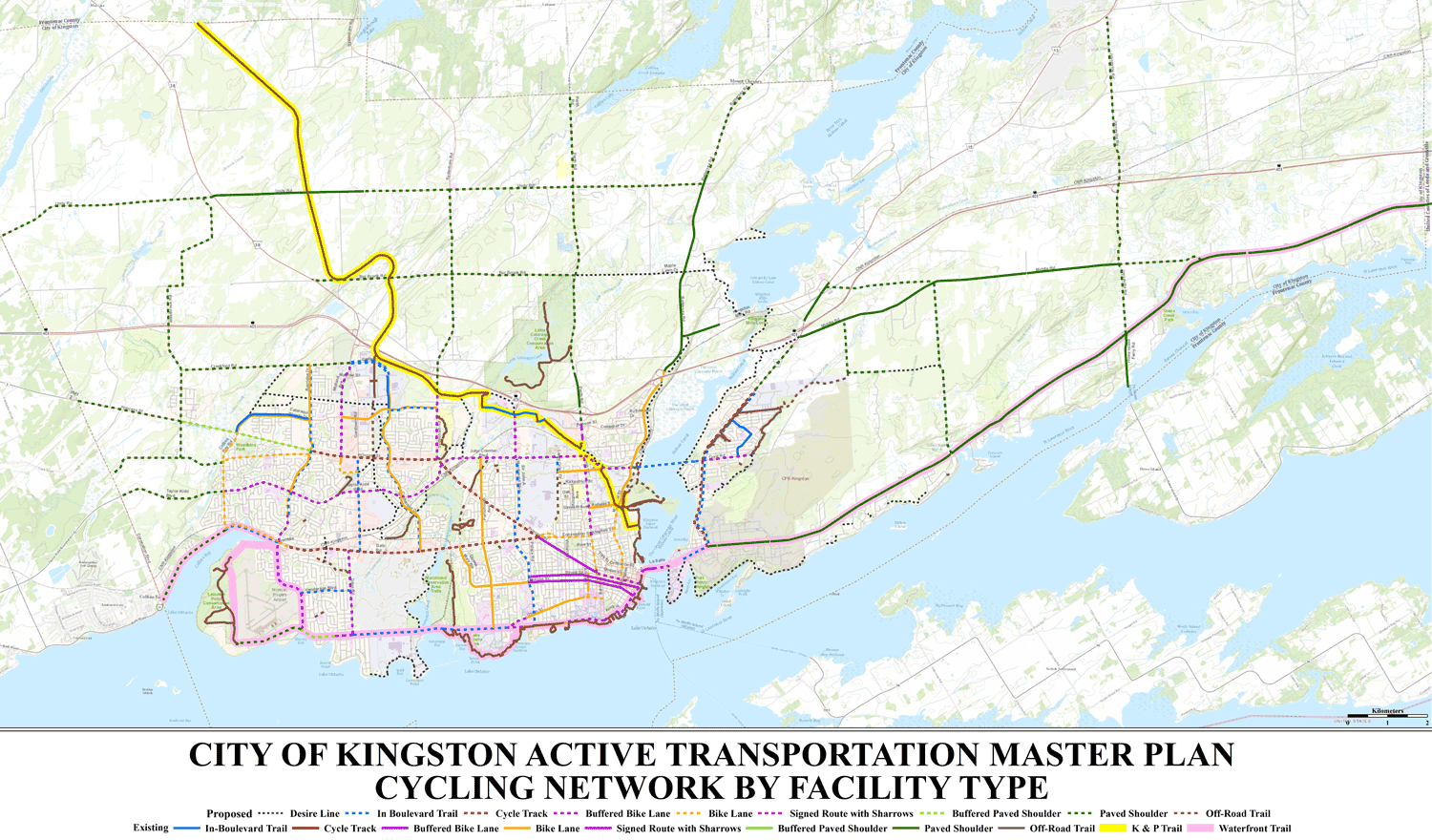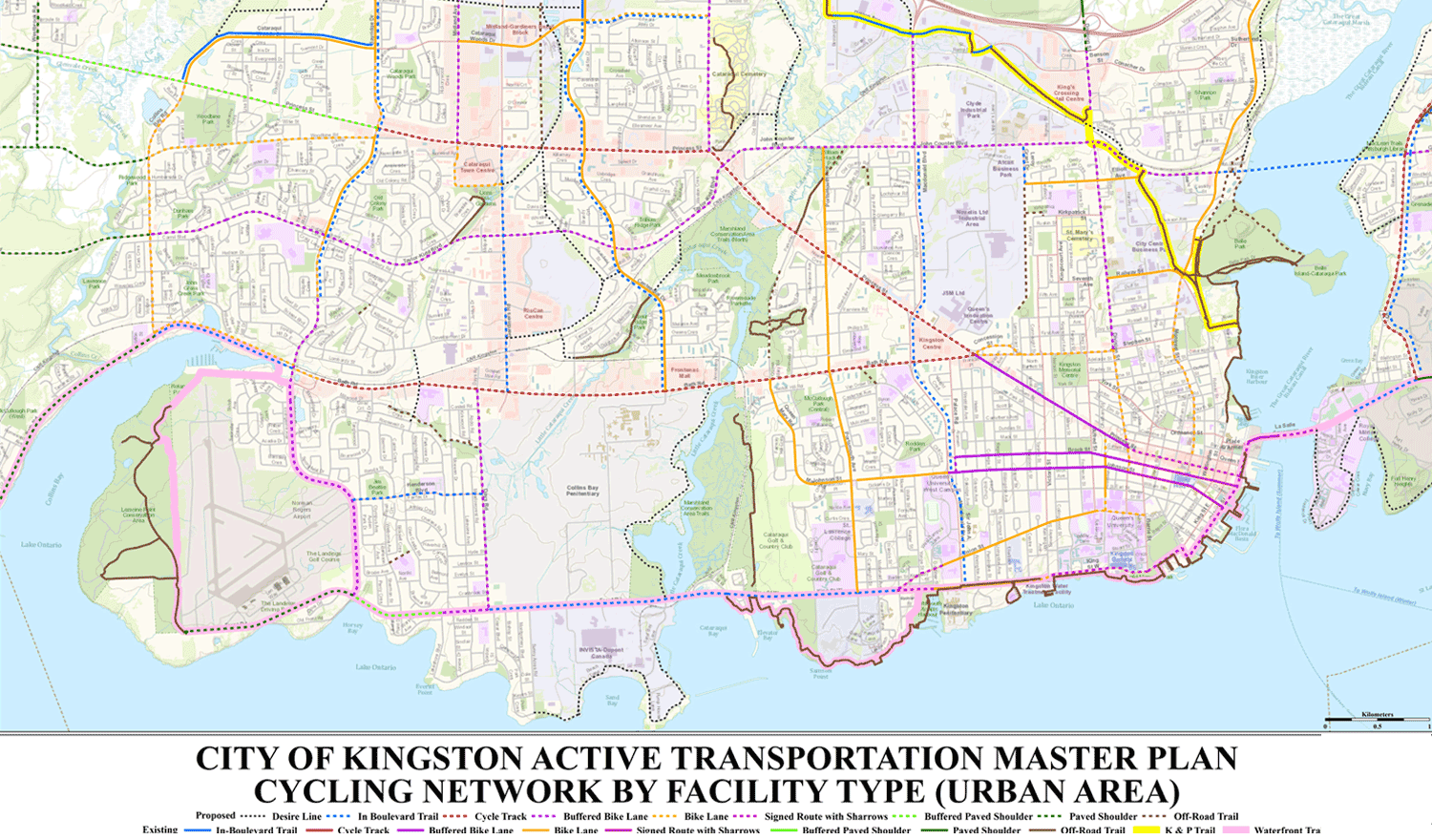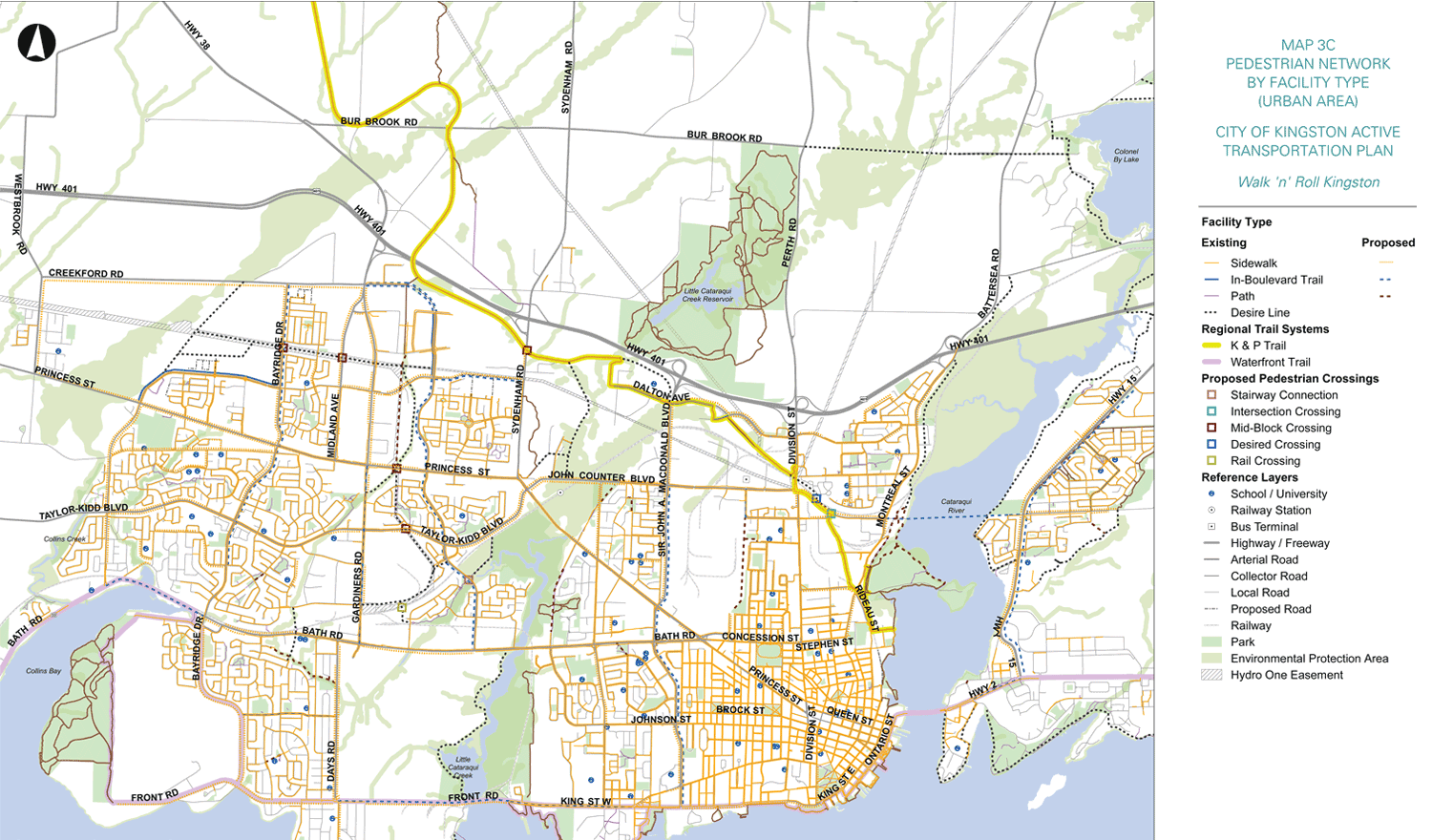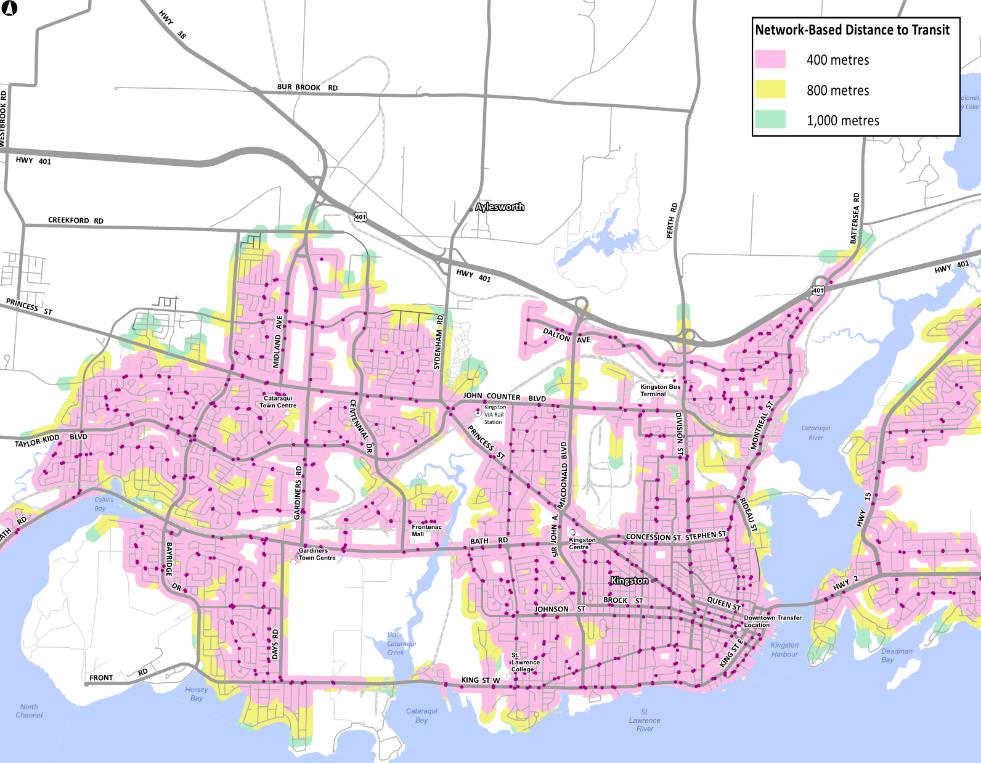Active Transportation Master Plan
Active Transportation Master Plan
The development of ‘Walk N' Roll'
Walk ‘n' Roll Kingston was developed between fall 2016 and summer 2018. The study included five phases, each informed by City staff, committee, stakeholder and resident input. The process was shaped by the City's past successes, current best practices and lessons learned from comparable municipalities. Public engagement throughout each stage of the development process was vital to creating a made-in-Kingston approach to active transportation.
Planned Infrastructure Upgrades
Cycling Network by Facility Type
Cycling Network by Facility Type (Urban Area)
Pedestrian Network by Facility Type
Benefits of active transportation
There are several benefits that can be realized by planning, designing and implementing active transportation infrastructure and supportive policies and programs at both the community and individual level.
These benefits include:
Health
- Improved cardiovascular and mental health
- Reduced health care costs
- Decreased stress, anxiety and chronic diseases
- Promotion of active lifestyles
Social
- Decreased cost of travel options and increased access to jobs/amenities
- Increased mobility and equity for vulnerable and low-income populations
- Increased independence, mobility and health for people of all ages including children, youth and older adults.
Environment
- Reduced carbon dioxide emissions and overall air pollution
- Decreased water pollutants related to driving
- Increased protection of green space and natural environments
Safety
- Improved sense of safety and livability among residents
- Increased motorist awareness of cyclists and pedestrians
- Improved sense of safety if there are other pedestrians and cyclists around
- Reduced number of collisions involving pedestrian and cyclists
Economic
- Money saved on car expenses
- Decreased infrastructure costs for municipal government (and taxpayers!)
- Increased local investment in business and community development
- Greater retention of young people in the City
- Increased tourism and popularity of cycling and hiking for visitors to Kingston
First/Last KM
Walking and cycling connections to Kingston Transit bus stops offer a cost-effective way to complete the first and last kilometre of a trip to work, school or other destination. When you combine active transportation with transit, you can gain greater access to areas of the city and reduce your overall travel times.
Buses are Accessible to Cyclists and Wheel Chair Users
Kingston Transit also operates the Rack & Roll program. All buses are equipped with a bike rack that can accommodate two to three bicycles. This service is available year round and makes it easier for cyclists to make use of public transit. All Kingston Transit routes are served by accessible buses equipped with low-floor kneeling capabilities and mobility aiding ramps. Transit service is provided on arterial roads with local neighbourhood connectors to link to key destinations including schools, hospitals, commercial centres, the train and bus station, etc.





